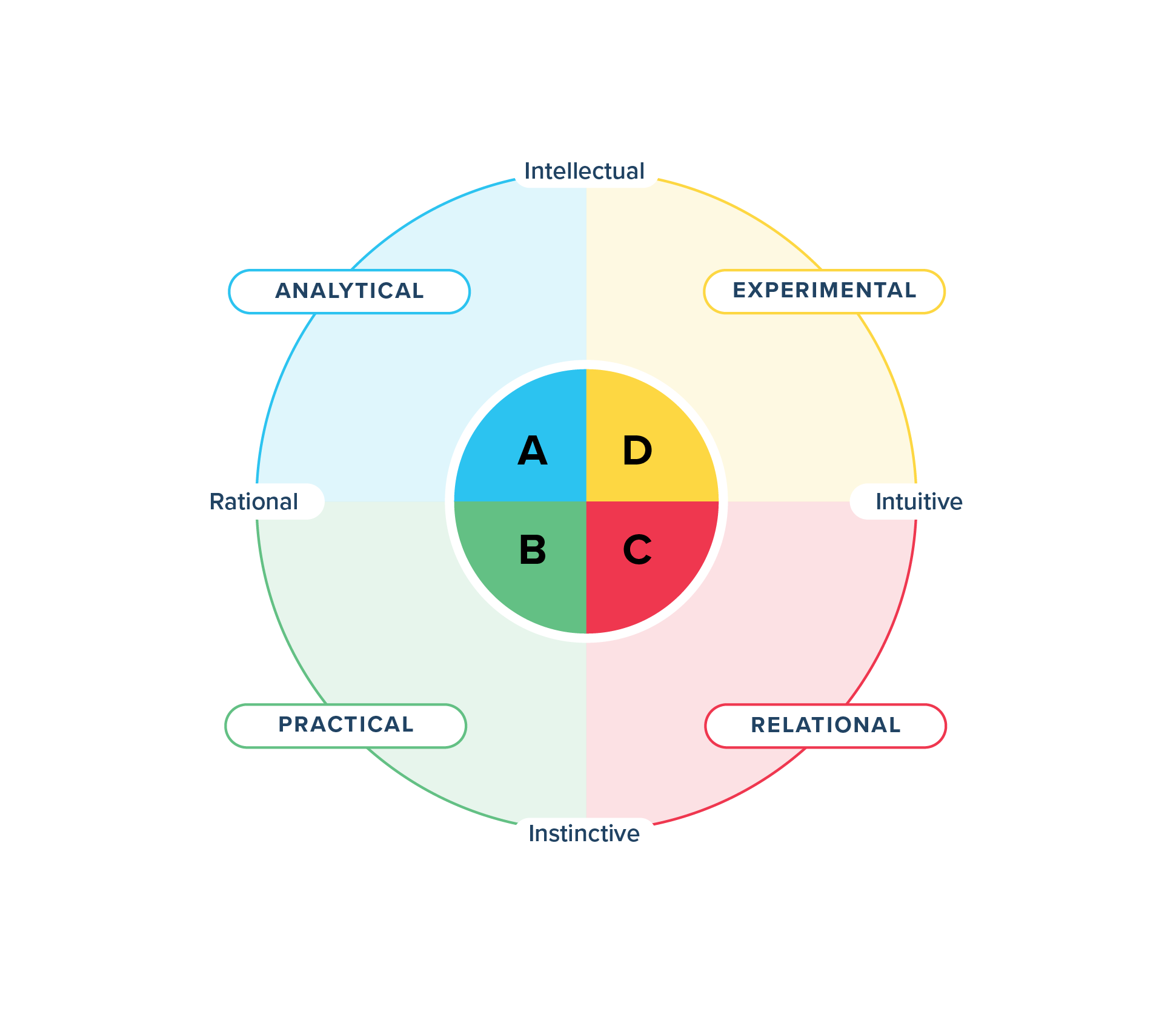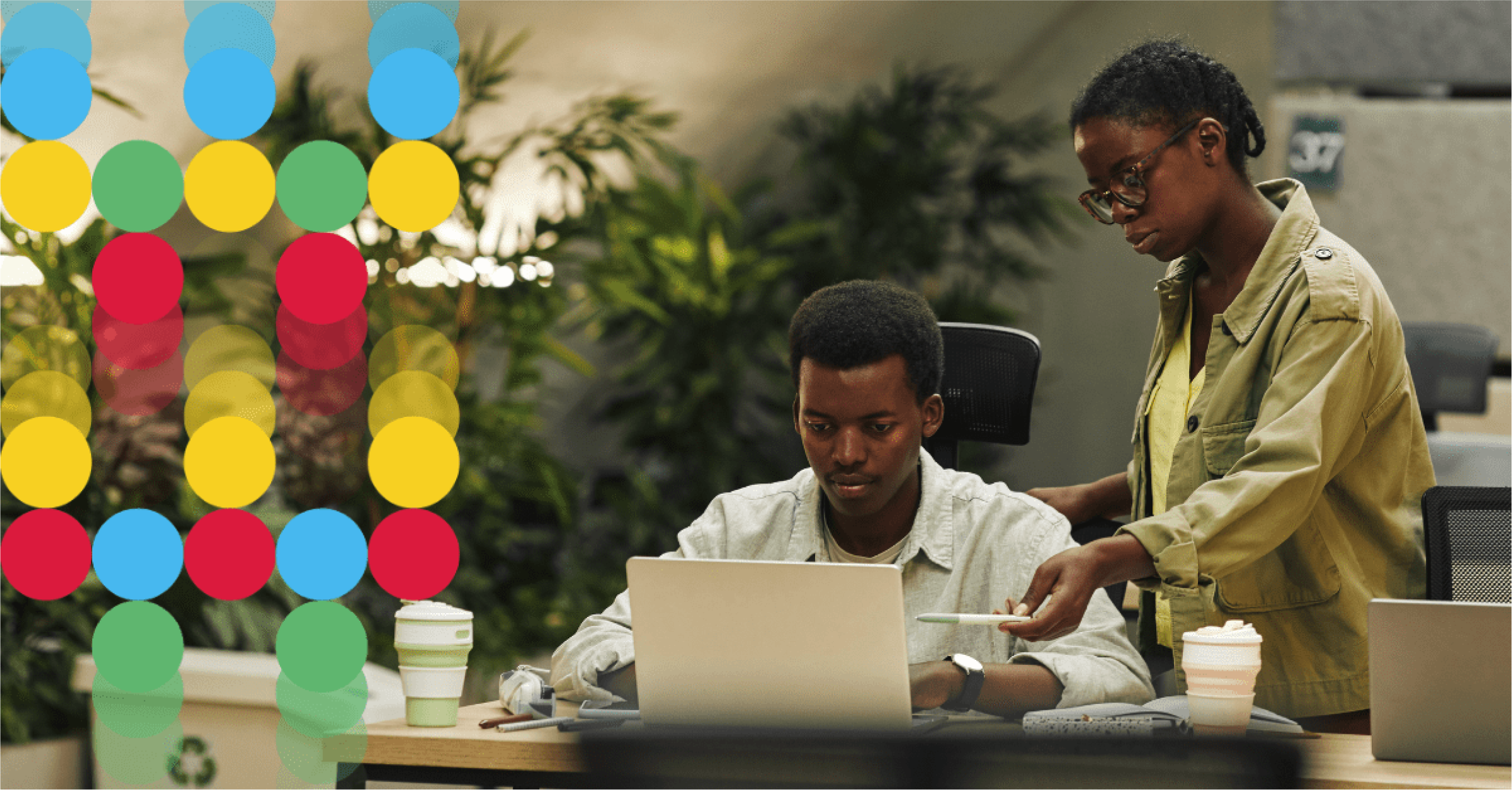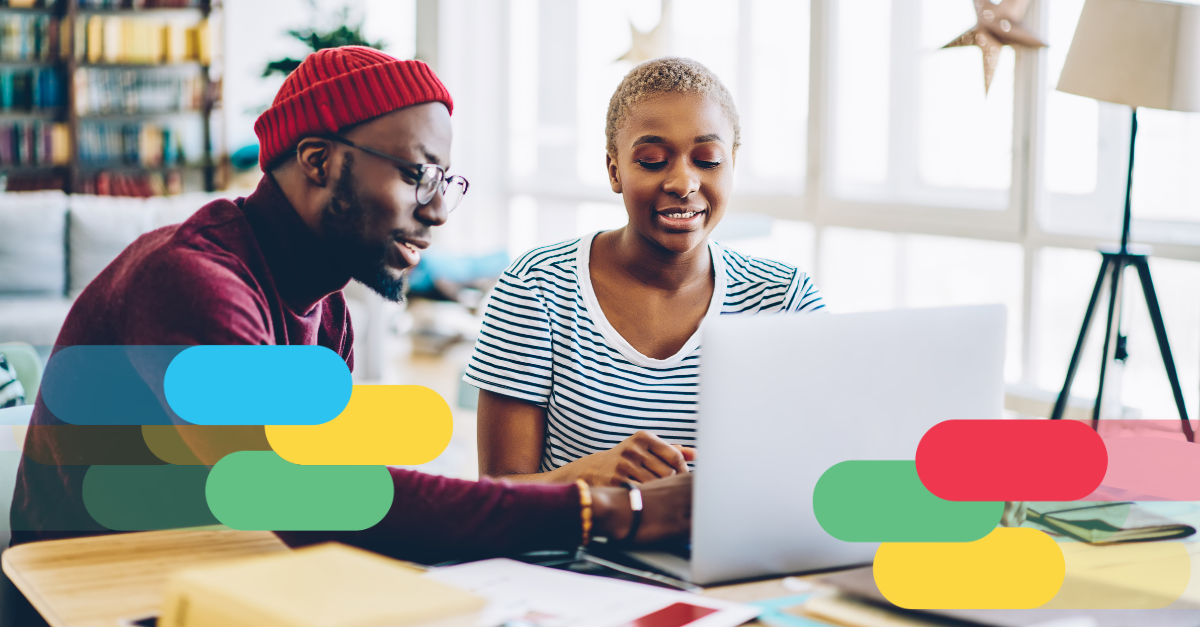Have you ever been stuck in a large room for all-hands training? How effective was it? You probably can’t recall much of the hourlong speech or the dozens of slides. But on the flip side, creating personalized learning for large employee populations is also challenging.
After all, what does it mean to have different learning styles? And how do you align the workforce if they’re all learning in different ways?
These are important questions for HR leaders and managers to answer, as 78% of employees surveyed by LinkedIn want workplace learning that’s tailored to their career goals and job-relevant skills. Humans are capable of continuously learning and growing. And while they have strong preferences for how they think, communicate, and learn, those preferences don't define them. All of us can stretch and grow in our approach to thinking and learning, even when it’s not familiar or comfortable.
Leaders, meanwhile, can accommodate different learning styles in the workplace without viewing those styles as hardwired and unchanging.
With that in mind, we must work to design personalized learning that’s effective, fair, and aligns your workforce with organizational goals and values. We’ll explore how Whole Brain® Thinking can provide a common language that unlocks people’s cognitive diversity while also making your teams more collaborative and effective.
![[HG]4 Ways to Encourage Growth Mindsets at Work (1)](https://www.thinkherrmann.com/hs-fs/hubfs/%5BHG%5D4%20Ways%20to%20Encourage%20Growth%20Mindsets%20at%20Work%20(1).png?width=1200&height=627&name=%5BHG%5D4%20Ways%20to%20Encourage%20Growth%20Mindsets%20at%20Work%20(1).png)
What Does Personalized Learning Mean?
Personalized learning recognizes the unique needs, preferences, and abilities of individual learners. It goes beyond the traditional one-size-fits-all approach to education and acknowledges that people have different ways of processing information and acquiring knowledge.
Each person has a distinct set of strengths and weaknesses. They perceive, comprehend, and retain information in different ways. By tailoring learning experiences to meet each learner’s preferences, organizations can help employees learn more and apply that knowledge more effectively.
Personalized Learning vs. Learning Styles
Individualized learning preferences shouldn’t be seen as fixed or narrow. While people may prefer specific learning modalities, such as visual, auditory, or kinesthetic, research by the American Psychological Association pushes back on the idea that we have rigid learning styles or can only learn in one or two ways. Just as humans can learn throughout their lives, we should also recognize the plasticity and adaptability of the brain to learn in multiple ways. People can learn through different modalities depending on the context and the task at hand.
Instead of focusing on fixed learning styles, employers can use personalized learning to offer a variety of learning opportunities and strategies that cater to different preferences and strengths. This approach encourages flexibility and adaptability in learning, allowing employees to explore and develop new skills and knowledge in numerous ways that resonate with them.
Why a Growth Mindset Matters for Learning at Work
A growth mindset is essential for personalized learning in the workplace because it allows people to see challenges as opportunities rather than endpoints. This mindset, as described by Carol Dweck, looks at mistakes as a chance to learn and improve. Meanwhile, successes can be celebrated while still encouraging employees to continue striving.
This is in contrast to a fixed mindset, which views intelligence and ability as fixed traits that can't be changed. People with a fixed mindset are more likely to avoid challenges and give up when faced with setbacks, and they're less likely to seek out new learning opportunities.
Sign up to our newsletter for the latest insights
Leaders can play a crucial role in creating a culture of learning and development in their organizations by modeling a growth mindset and encouraging their employees to do the same. They can do this by:
- Praising employees for their learning and progress, not just their effort or natural abilities.
- Encouraging employees to take on challenges and learn from their mistakes.
- Giving employees opportunities to learn and develop, including training and learning resources.
- Creating a positive and supportive work environment where employees feel comfortable acquiring new knowledge and taking reasonable risks.

How Whole Brain® Thinking Supports Personalized Learning
Whole Brain® Thinking is a framework for helping individuals, teams, and organizations improve their problem-solving, decision-making, communication, and collaboration. It all starts when people understand how they think and how they prefer to think. When employees understand their thinking and feel psychologically safe enough to share those preferences with each other, organizations embrace cognitive diversity rather than letting differences divide them.
Whole Brain® Thinking acknowledges that different tasks require different mental processes, including how we prefer to learn. Organizations get better results when strategically leveraging the full spectrum of thinking available. The Whole Brain® model consists of four quadrants:
- Analytical (Blue Quadrant): Represents logical, fact-based, and analytical thinking.
- Practical (Green Quadrant): Associated with organized and structured thinking.
- Relational (Red Quadrant): Represents emotional, feeling-based, and interpersonal thinking.
- Innovative (Yellow Quadrant): Associated with creative, imaginative, and holistic thinking
Everyone has a different mix of preferences, and there’s no quadrant or combination of quadrants that’s better than any other. Importantly, while we might have strong preferences for one or more quadrants, we're all capable of accessing and succeeding with each thinking preference.
This is especially important for creating tailored learning experiences at work. The goal isn’t to use Whole Brain® Thinking to silo employees based on their strongest preferences. Instead, you can create a variety of learning experiences that span employee preferences, giving everyone a comfort zone and encouraging them to stretch beyond their defaults.
Here are four examples of how leaders and organizations can apply Whole Brain® Thinking to personalize learning experiences:
Assess Individual Thinking Preferences
Leaders can use tools like the Herrmann Brain Dominance Instrument® (HBDI®) to assess and gain insight into the thinking preferences of their team members.
When entire teams or organizations take the assessment and receive HBDI® profiles, HR leaders can use this data to tailor learning and professional development opportunities. They can steer employees toward a curriculum based on particular preferences — or challenge the workforce to stretch if there’s a low preference for certain approaches.
Create a Common Language
Whole Brain® Thinking helps organizations create a common language around how everyone thinks, helping employees turn differences into strengths. When designing personalized learning activities, consider whether your communication resonates with people across learning styles and preferences.
You can — and should — still be consistent in your messaging. However, by recognizing individual preferences, you can tailor communication and learning instruction methods to engage thinkers across quadrants. For example, data-driven presentations and step-by-step instructions have their place in many situations, especially for Blue and Green thinkers, respectively. But make sure to provide opportunities for questions and collaborative discussions, as well as ongoing support (Red). Additionally, some learning activities are best structured as open-ended and creative (Yellow).
By adapting communication to accommodate different thinking preferences, organizations can personalize learning and optimize knowledge retention.
Design Different Types of Learning Activities
Personalized learning doesn’t mean that employees only embrace the activities they’re most comfortable with. Design a variety of activities that cater to different thinking preferences.
For example, consider an engineering team in which most members strongly prefer analytical thinking (Blue), practical thinking (Green), or both. Of course, these engineers should continue critical training for their specialty, such as obtaining the latest knowledge or undergoing safety training.
But to ensure they learn in multiple ways, you might also have them explore more relational (Red) and experimental (Yellow) activities, joining a cross-functional project. This type of work requires strong interpersonal skills, the ability to communicate patiently and effectively, and the willingness to look at old problems in new ways.
Create Flexibility in Learning Approaches
Flexibility in this context recognizes that individuals can access and develop all four quadrants of Whole Brain® Thinking. Whenever possible, give employees multiple pathways to learn at work, helping people of all learning preferences find a pathway that makes the most sense for them.
Sometimes, that means employees will choose learning activities that align most with their preferences. But also encourage employees to reflect on their thinking and explore alternative approaches. including pathways outside their usual preferences.
The most important part is giving employees the freedom to choose. Personalization helps your employees feel somewhat in control of their learning during the early, often uncomfortable stages. By contrast, if employees feel intimidated by the early stages of learning, they might never move forward. That harms their career development and your organization’s growth.
![[HG] 4 Steps for Supporting Personalized Learning With Whole Brain® Thinking (1)](https://www.thinkherrmann.com/hs-fs/hubfs/%5BHG%5D%204%20Steps%20for%20Supporting%20Personalized%20Learning%20With%20Whole%20Brain%C2%AE%20Thinking%20(1).png?width=1200&height=627&name=%5BHG%5D%204%20Steps%20for%20Supporting%20Personalized%20Learning%20With%20Whole%20Brain%C2%AE%20Thinking%20(1).png)
Examples of Personalized Learning in the Workplace
Consider the basic skills for doing your job. At some point, you had to learn these skills. That’s important so you can put them into practice. But once you’ve achieved mastery, you’re likely not learning much new each time you perform these tasks.
Instead, you need novelty — new information, new activities, new angles on the familiar. Brain training is only as valuable as what you’re learning anew, rather than repeating.
The point of understanding our thinking preferences isn’t so we use those methods exclusively. We must stretch beyond our comfort zone if we’re to continue growing professionally and personally.
Helping a High-Potential Stretch
For example, you’ve spotted a high-potential employee you believe could be developed into an executive within your organization. This person is a sought-after subject matter expert with strong preferences for experimental (Yellow) and relational (Red) thinking. They’re able to connect the dots others miss to form novel ideas. Meanwhile, they’re engaging and inspiring with their co-workers and customers. They attract praise and loyalty from everyone they work with.
They’re off to a great start! At the same time, they’ve managed few direct reports, and they’ve never held a profit-and-loss (P&L) role. They need to learn in areas that aren't only new to them but also not in their preferred thinking modes.
A professional development plan for this high-potential employee could do well to stretch their thinking in the Green and Blue quadrants. They need to learn more about the financial side of the business. They’ll need to understand more about budgeting, setting and measuring key performance indicators, and setting high-level business strategy. They’ll also need more experience managing, developing, and retaining talent.
This learning might start with a formal classroom setting (Green), helping this employee cover fundamental knowledge in a sequential manner. They'll need to demonstrate what they’ve learned and why it matters to their work (Blue). The next step might include learning through mentoring or a product development project, helping the employee tap into the Yellow and Red thinking they’re most comfortable with.
Taking on direct reports might be an easier lift for this high-potential future leader, as they can access their relational strengths to build rapport and trust. However, they’ll need to learn how to create structured performance management plans and measure progress against these goals. These activities are more analytical and planning-based.
Personalize Learning to Help Your Team Grow
We are all lifelong learners today, but we don’t all learn in the same ways at the same time. Personalized learning at work can help employees grow faster while filling in the gaps in their professional knowledge and expertise.
Importantly, just because we have certain preferences and strengths in our thinking doesn’t mean we have fixed learning styles. We can learn in many ways, and we often benefit from stretching our thinking to new places. That’s where Whole Brain® Thinking can be so powerful for supporting personalized learning. By understanding how employees think, you can help them find learning activities that help them grow quickly and push them to explore new areas.
Interested in learning more about the Whole Brain® approach to learning? Check out this on-demand webinar with Ann Herrmann-Nehdi, chief thought leader at Herrmann International.


.png?width=1200&name=%5BHG%5D%20featured_How%20Leaders%20Can%20Create%20Personalized%20Learning%20at%20Work%20(1).png)









